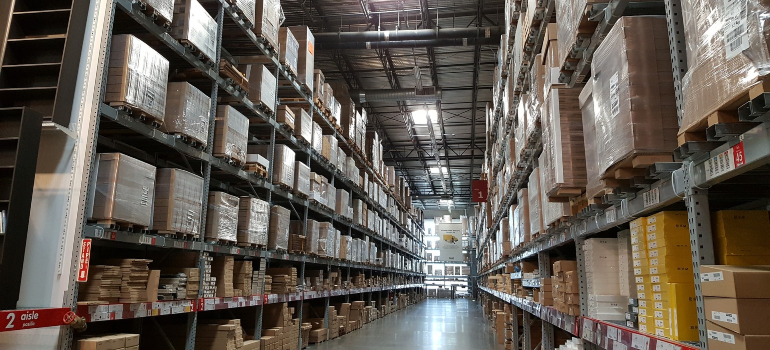Relocating involves numerous challenges, with moving heavy furniture being particularly scary. Proper planning and the right resources are key to a successful move, especially over long distances. Partnering with Verified Movers is crucial for ensuring a secure and productive move. Find out about the essential strategies and resources to help you manage this process effectively!
Planning Your Move
Start by evaluating your furniture. Measure each item, noting dimensions and special requirements. Consider the weight and whether certain pieces can be disassembled for easier transport. Choose your moving date carefully, considering factors like weather, traffic, and cost. Think about the availability of help, both professional and from friends or family. Early planning can significantly ease the process. Also, explore potential routes to your new location, taking into account any size or weight restrictions on roads or bridges that could affect the move of your heavy furniture.

Packing and Preparing Heavy Furniture
Gather materials like sturdy boxes, bubble wrap, and moving blankets for protection. Utilize tools such as dollies and straps for safe handling. If possible, disassemble furniture to make transportation easier. Wrap each piece securely, paying extra attention to fragile areas, and label all parts and boxes for easier reassembly. Keep screws and other small parts in labeled bags so they don’t get lost. Consider using corner protectors for added safety during transport, especially for pieces with sharp edges or delicate finishes. For more insights on organizing your move effectively, don’t miss out on tips on how to speed up the unpacking process, which offers valuable advice on keeping your items orderly both during packing and after reaching your destination.
Transportation Strategies
Research moving companies that specialize in moving heavy furniture. Look for services with experience in long-distance moves, and ensure they offer insurance and tracking for added security. Proper loading is crucial for the safety of your furniture during transit. Verify the company’s reliability by checking customer reviews and their history of handling heavy items. Ask about their methods for securing furniture inside the moving truck, as well as their policies regarding delays or route changes. Ensure they have a good understanding of the best practices for handling heavy and bulky items.

Setting Up at Your New Location
Upon arrival at your new location, inspect your furniture for any damages incurred during the move. Carefully assemble and place each piece, considering the layout of your new space for optimal functionality and aesthetics. Prioritize positioning heavy items first, as this will make it easier to arrange smaller items around them later. If necessary, adjust the placement of rugs or other floor coverings before setting down heavy furniture. Take time to ensure that everything fits comfortably and safely in its new space, and make any necessary adjustments to avoid obstructing pathways or creating clutter. Knowing about unpacking and settling in can be very helpful!
Special Considerations for Long-Distance Moves
Long-distance relocation presents unique challenges, especially when relocating heavy furniture. Such moves require careful consideration of various factors that could impact the safety and condition of your furniture. Initially, it’s crucial to think about the differences in climate and terrain between your current location and your destination. Furniture materials may react differently to changes in humidity, temperature, or elevation, potentially causing damage if not properly prepared for transit.
Another aspect to consider is navigating legal and logistical challenges, which are an essential part of planning a long-distance move. This includes understanding transportation laws, especially for oversized items, and securing any necessary permits. To ensure you are well-informed about these aspects, consider visiting the U.S. Department of Transportation‘s website for detailed guidance on moving household goods and transportation regulations. Familiarize yourself with the rules of both your current and new location to avoid legal complications.
Adapting to climate and terrain
For instance, wood can expand or contract with humidity changes, while metal might corrode in more humid climates. Researching and preparing for these environmental factors will help protect your items during the move. Additionally, consider the terrain. A move from a flat urban area to a mountainous region, or vice versa, might require special transportation arrangements to navigate roads safely.

Another aspect to consider is the potential need for storage solutions. If your new home isn’t ready immediately, or if you need to stagger your relocating process, finding secure, climate-controlled storage for your heavy furniture is essential. This ensures that your items are kept safe and in good condition until you can move them into your new home. Also, try to remind yourself, that proper storage is particularly important for sensitive materials like wood, and our tips for storing wooden furniture can guide you through this process.
Practical Tips for an Effortless Relocation
Ensuring an effortless relocation when dealing with heavy furniture involves more than just physical preparation; it requires strategic planning and adaptability. Here are some expanded tips to help you navigate this process:
- Plan Early: Start organizing your move a few months ahead. This way, you can book movers early, gather supplies, and sort logistics calmly. Planning ahead can also be more cost-effective.
- Keep an Inventory: List all your items, especially the heavy furniture. Note their condition before moving for insurance and tracking purposes.
- Use Furniture Sliders: These tools help move heavy items across floors without damage, especially on hardwood or tiles.
- Hire Professional Packers: For fragile or valuable furniture, getting expert packers can prevent damage during the move.
- Be Flexible: Expect and be ready for changes like rescheduling or last-minute packing.
- Get Insurance: Make sure your movers offer insurance to cover your items during transit.
- Communicate with Movers: Tell your moving company about your heavy furniture’s size, weight, and handling needs.
- Plan Your Arrival: Decide where each piece of furniture will go in your new home before it arrives. This makes unloading faster and easier.
Following these practical tips can greatly enhance the efficiency and ease of your moving process, as to make sure that your furniture arrives at your new home safely and in good condition.
Master the Art of Moving Heavy Furniture!
Successfully moving heavy furniture hinges on meticulous planning and using appropriate resources. By following the outlined strategies and leveraging the expertise of moving specialists, your long-distance relocation can be more manageable. With careful preparation and the right approach, this process becomes a feasible part of moving smoothly into your new home!




